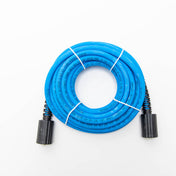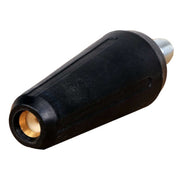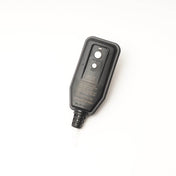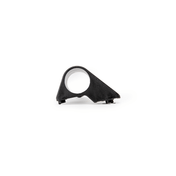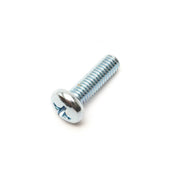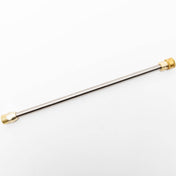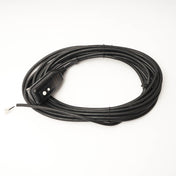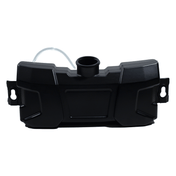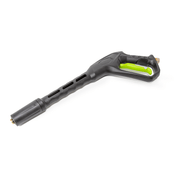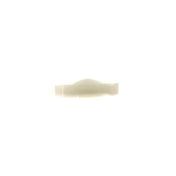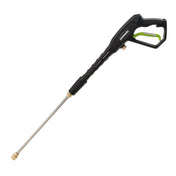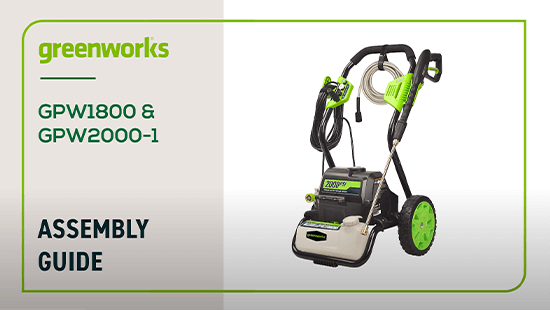Elite 2000 PSI 1.2 GPM 14 Amp Pressure Washer
Elite 2000 PSI 1.2 GPM 14 Amp Pressure Washer is backordered and will ship as soon as it is back in stock.
Key Features
Key Features
- ✓Powerful 14Amp Motor
- ✓Push Button Start
- ✓Quiet Operation
- ✓¼" Quick Connect
- ✓Onboard Soap Tank
- ✓35ft Power Cord
- ✓3 Year Warranty
Warranty
Warranty

Compatible With :
Description
Description
Welcome to a Life. Powered. by Greenworks. The world’s most powerful residential electric pressure washers! This electric power washer is ideal for everyday high-pressure cleaning jobs around the house. Whether it's the car, the house, the deck or the driveway, your stuff is sure to shine. The Greenworks Elite 2000 PSI 1.2 GPM 14 Amp Pressure Washer is sure to impress. Boasting up to 1.2 GPM of water flow, it's powerful, reliable and built for the toughest cleaning tasks. With a hassle-free push-button start, it powers up easily and gets to work fast. With a rugged metal spray gun, it's tough and durable, and the pump features an anodized coating that's resistant to corrosion. It's equipped with an extra-long 35-ft power cord with in-line GFCI and water-resistant power plug, hassle-free kink-resistant hose that eliminates frustrating hose tangles, never-flat wheels for easy transportation, on-board soap tank, and on-board accessory storage. Backed by a 3-year tool warranty, it's built to last for years to come.
- [POWER] 2000 PSI and 1.2GPM (up to 1.8 GPM max) for efficient cleaning of residential areas. Ideal for medium duty projects including but not limited to cleaning patio furniture, grills, driveways, walkways, and vehicles.
- [14-AMP] Powerful 14 AMP motor and convenient push button start. The motor switches off with start/stop technology when the spray wand is not engaged to save energy and protect the lifespan of the pump and motor.
- [FEATURES] Equipped with an extra-long 35-foot power cord with in-line GFCI and water-resistant power plug, you'll have plenty of flexibility to get the job done safely. The rugged open frame design equipped with 10-inch never flat wheels ensures durability and ease of use.
- [SOAP] Substantial 2 liter on-board soap tank, and on-board accessory storage allows users to conveniently switch between soap application and clean-water. Simply switch out the soap nozzle for the desired spray tip to rinse.
- [QUIET] Low noise means less headaches for you and your neighbors. At only 78.9 dB, you can pressure wash anytime of the day!
- [CETA CERTIFIED] Cleaning Equipment Trade Association-certified pressure washer, this model has guaranteed performance from a trusted source.
Specifications
Specifications
-
Power TypeA/C
-
Amps (A)14
-
Maximum PSI2000
-
Maximum GPM1.8
-
Rated GPM1.2
-
Rated Power of Motor (kW)1.6
-
Pump TypeTriplex
-
Thermal Relief ValveNo
-
Cleaning Units (C.U.)2400
-
Power Cord Length (ft)35 ft
-
GFCI ProtectionYes, Inline
-
Hose Length (ft)25 ft
-
Nozzles Included25°, 40°, Turbo, Soap
-
Unit TypeWheeled
-
On-Board Soap TankYes
-
Soap Tank Capacity2 liters
-
Compatible Extension Cords25 ft 14-gauge / 50 ft 12-gauge
-
Maximum Inlet Water Temperature104 °F (40 °C)
-
Product Dimensions (Assembled) (L x W x H)16.7" × 21.7" × 17.3"
-
Tool-Only Weight35.27 lbs.
-
Package Dimensions (L x W x H)16.5" x 10.2" x 11"
-
Package Weight37 lbs (16.8 kg)
Manuals
Manuals
Includes
Includes
- 2000 PSI 1.2 GPM 14 Amp Electric Pressure Washer
- Gun Trigger
- Gun Wand
- 25FT High Pressure Hose
- 4 Nozzles - 25°, 40°, Soap and Turbo
- Owner's Manual
Product Videos
Frequently Asked Questions
Frequently Asked Questions
- What soap should I use with my pressure washer?
- Does my water source have to be of a certain PSI to run the unit properly?
- Can I switch between applying soap and rinsing?
- How do I winterize my pressure washer?
- Can I use hot water with your pressure washers?
- What size are the threaded fittings on the pressure washer?
- What size are the nozzles?
- My pressure washer will not start, or I have started the pressure washer, but it keeps shutting off, pulsating or does not reach high pressure. What’s wrong?
- Can I use a longer high-pressure hose?
- Do you offer extension wands?
- What uses are the different nozzles ideal for?
We only recommend using a designated pressure washer soap. You can use any preferred brand of pressure washer soap, if it does not contain any harsh chemicals such as bleach, alkaline or ammonia. Be sure to follow the directions on the pressure washer soap for whether or not it needs to be diluted; soap should be a watery consistency.
Yes, the ideal input pressure is 60 PSI. However, the unit tolerates between 45-75PSI. If the inlet pressure is below 45 PSI, it will lead to a pressure drop and the machine will not pressurize properly. This often causes the unit to vibrate and sputter. Any higher than 75PSI unit may receive internal damage from over pressure, breaching seals, triggering the thermal valve etc. If the unit does not have the correct PSI the unit will not run correctly, and the motor can be damaged.
Yes, you can! For units with an onboard soap tank: Soap can only be applied with the black soap nozzle, simply switch it out for the appropriate nozzle that you require for rinsing. Allow a few seconds for the soap suds to clear from the line, and then you will have clean water. For units that use a soap bottle: To rinse, you will have to remove the soap bottle and reattach the wand with the appropriate nozzle that you require for rinsing.
The optimum procedure advises using a pressure washer pump saver that can be purchased at most hardware stores. Please see the optimum winterizing procedure below. • Disconnect all water connections (garden hose). • Turn on the machine for a few seconds, until the remaining water in the pump exits. Turn off immediately. • Use a pressure washer pump saver - follow instructions provided on pump saver • Roll up electrical cord and hose neatly, making sure there are no kinks. Ideally, we advise storing the machine and accessories in a room that does not reach freezing temperatures. Do not store near the furnace or other sources of heat as it may dry out the pump seals.
We offer cold water pressure washers only; the maximum inlet water temperature should not exceed 104 °F (40 °C).
All threaded connections on our pressure washers are an M22 14mm fitting.
Our pressure washers use ¼” quick connect nozzles.
There are a few factors that could cause these reactions such as excess air in the pump or a clogged/faulty nozzle. See all troubleshooting options below. Cleaning Obstructed Nozzles Over time with use, the pressure washer nozzles may collect dust, dirt, and calcium build-up which as a result cause the pressure washer to malfunction while in use. To clean nozzles soak them in a 50/50 mixture of white vinegar and warm water for a minimum of 15 minutes. Then proceed to poke your nozzle cleaning tool or paper clip through the end of the nozzle hole to poke out any debris. After you have done this, rinse them with warm water. Purge Air from Pressure Washer Set up the unit as per usual and ensure you are not using an extension cord. Remove any nozzle that may be connected at the end of the wand. Make sure that you have a green light on the GFCI on the power cord. Turn your garden hose on but leave the pressure washer turned OFF. With the pressure washer turned off, squeeze on the trigger for about 3 minutes – allowing the water to run through the unit at no pressure. In doing so, you are bleeding the unit out of any air that may be stuck in the pump. After 3 minutes, turn the unit on. Reinstall one of your clean nozzles and continue using the unit. At this stage, if the unit shuts off when a nozzle is installed be sure to try all nozzles. A faulty nozzle may cause the unit to shut down. Additional components to check: • Ensure a nozzle is connected. Be sure to try all nozzles. • Ensure that the water source is fully opened and is at least 60PSI (Refer to: Does my water source have to be of a certain PSI to run the unit properly?) • Check that there is at least 10' of unrestricted garden hose between the hose connection and the unit, any kinks will prevent the flow of water from going into the unit and prevent proper pressure. • For best results, use a 1” (25 mm) or 5/8” (16 mm) garden hose. • Check that the water inlet is not clogged. Disconnect the garden hose, remove the filter and rinse with warm water. • That you are using a working outlet. Be sure to try more than one!
While you may use a longer high-pressure hose, please note that the pressure will drop.
Unfortunately, we do not offer extension wands. While you may find something compatible with another brand, know that the pressure could be affected.
0° - Red nozzle: This nozzle is typically used for removing tough stains like rust and debris from concrete and metal. You can also use it for removing caked on mud from heavy construction, farm, or lawn equipment. Do not use this nozzle on wood or home siding or for washing a car because this stream is very strong and powerful and can damage a soft surface. 15° – Yellow nozzle: The yellow pressure washer tip provides high versatility with its 15-degree angle tip. Referred to as the washing tip, because it provides adequate pressure to remove dirt from surfaces but is designed to not damage many surfaces. This pressure washer tip is designed for “sweeping” foliage or debris given its wide angle. This tip is versatile due to its wide area of cleaning and strong pressure application. 25° – Green nozzle: The green colored, 25-degree nozzle is best used to sweep away dirt and mud. Use it to sweep away leaves from decks, driveways, and sidewalks. It can also be used for removing light mildew stains and removing algae and bacteria build up from pools. 40° – White nozzle: The white 40-degree tip, referred to as the “fan” tip creates the widest area of cleaning with relatively low pressure. This pressure washer tip is best used for light or delicate cleaning applications. It is recommended for light cleaning on wood decks and other soft or delicate surfaces. 75° Soap – Black nozzle: The black colored nozzle is a low-pressure detergent nozzle. You use this when applying your preferred detergent for your cleaning projects. Turbo Nozzle: The nozzle rotates in a zero-to-15-degree spray pattern in a circular motion to break down tough dirt and grime. The spray pattern can cover area of 4 to 8 inches wide, depending on a distance between the tip and the surface being cleaned.









